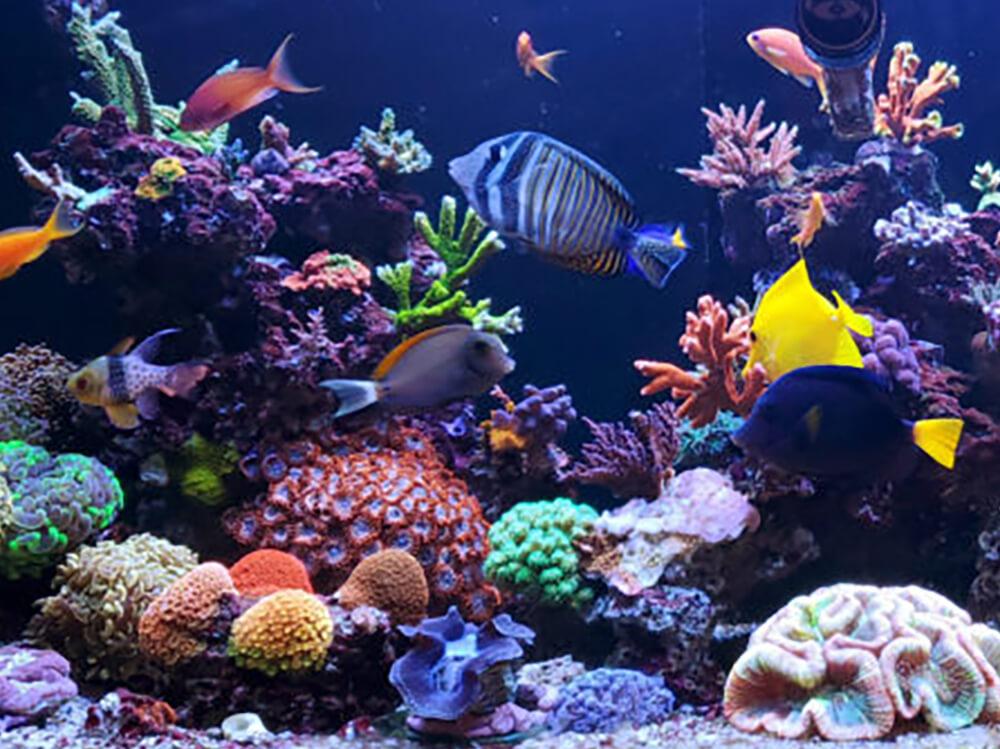How to raise pH in a reef tank
pH can make a real positive difference to corals. Here's how to raise pH in a reef tank.
Once corals are added it is KH which has greater immediate importance because it drops quickly, and drops to a level which is detrimental to coral health. But get into your stride with the management of KH, Calcium, Magnesium, nitrate, phosphate and other supplements and pH can definitely come back into play in your reef aquarium.
The pH of the ocean and on a coral reef is about 8.3, and it’s very constant. The combination of buffering from coral sand, rocks that contain lime and your salt mix typically set the pH in the fish tank to about 8.2. Without pH buffers a Reef tank's pH can drop to as low pH 7.8 at night (and many do,) but to get really fast growth and optimum health from your corals the magic number is pH 8.4, for 24 hours per day.
Carbon dioxide lowers pH, and Oxygen raises it. So the first simple way to increase pH is to tackle carbon dioxide. CO2 is dragged in with atmospheric air via protein skimmers, and is produced as organisms respire. Ensure that there is plenty of surface movement in the tank by making sure that wave-making pumps to produce ripples and help to drive off CO2.
Algae reactors for reef tanks
Use Macroalgae like Chaetomorpha in a refugium or reactor to soak up excess carbon dioxide as it photosynthesizes. Light it for 24 hours per day and it will uptake CO2 all day long, without switching to nighttime mode where the reverse happens. And a big plus with macroalgae is that as well as soaking up CO2 and helping to stop lower pH, it also produces oxygen via photosynthesis which pushes pH up. So macroalgae can be one complete (and simple,) way to raise the pH in a reef aquarium.
Reef tank CO2 scrubbers
Another way to lessen the carbon dioxide levels being drawn into the system is to filter it out via the protein skimmer air intake. CO2 scrubbers are chambers containing CO2 absorbing media which connect to protein skimmer intakes. Big in America, their benefits are proven so are a worthwhile piece of equipment for those who strive for a higher pH and less CO2 in their systems. The media does need to be replaced once spent, and the speed at which it becomes spent depends on the amount of CO2 in the room and the airflow rate of the skimmer that’s sucking it in.
Saltwater pH buffers
The next way to raise pH in a reef tank is to use buffers. Use reef recipe powders to raise pH, many of which have the added benefit of raising KH. So test KH, dose a KH/pH buffer accordingly and you will maintain two important parameters.
Kalkwasser for reef tanks
And lastly, the old-school but still very effective way to raise pH is to use Kalkwasser. Literally meaning “limewater,” kalkwasser is a very caustic solution that should be added ideally by way of a kalkwasser reactor. A Kalkwasser reactor is a costly and complicated way to raise pH, (although Kalkwasser itself can be very cheap,) it’s not for children as it’s dangerous, and it’s not for the faint-hearted as get it wrong and you could raise pH too rapidly, risking your livestock. But give it to a competent, old-school reefer, they’ll hit that magic pH 8.4 and hold it there, and the difference in coral growth will be visible.









